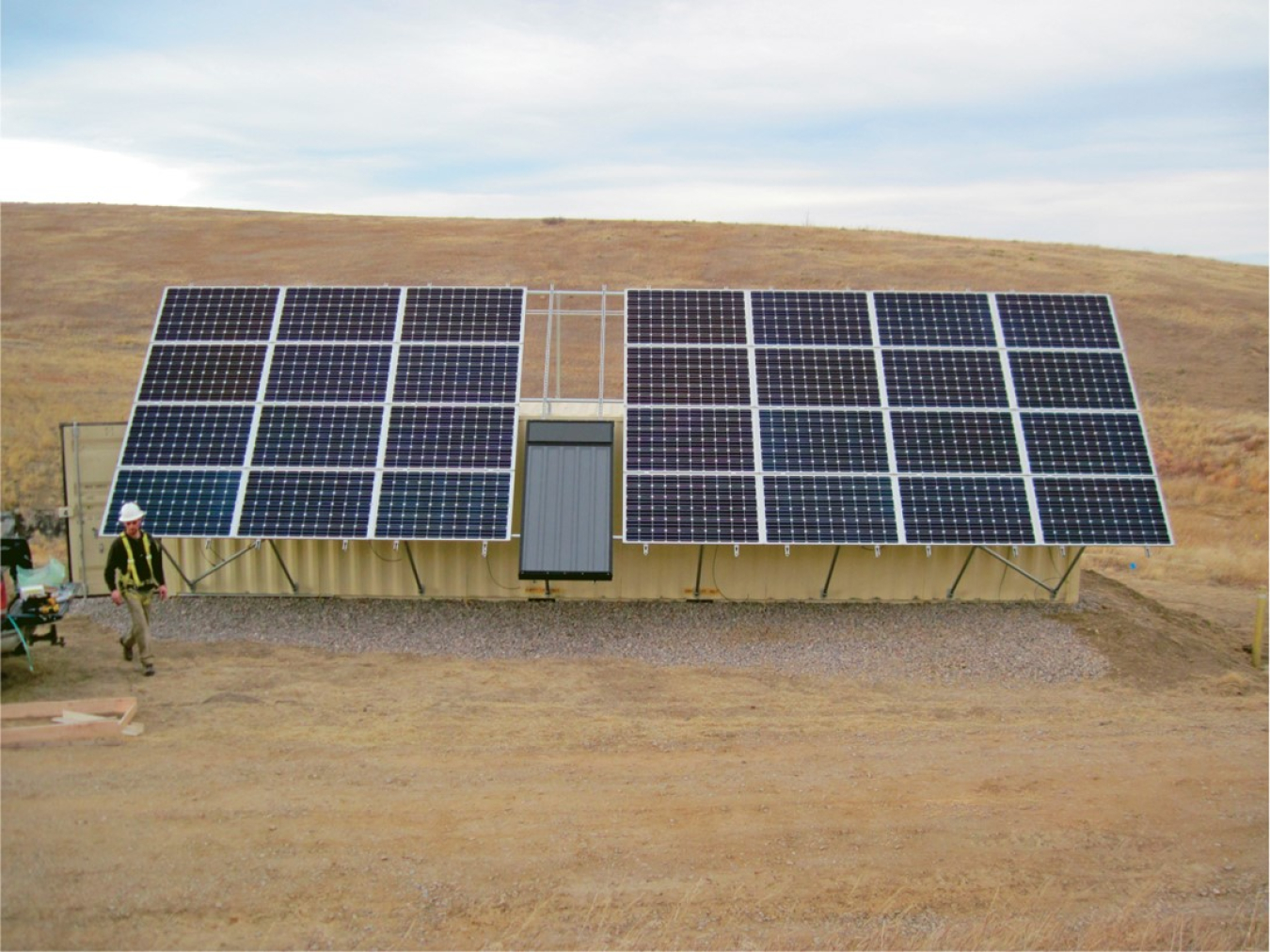Increased emphasis on renewable energy has greatly reduced travel expenses and improved monitoring efficiency at a growing number of sites.
April 22, 2022The U.S. Department of Energy (DOE) Office of Legacy Management (LM) has been using renewable solar energy to manage and maintain some of its sites as long as the office has existed. As we approach Earth Day 2022, let’s look at how LM has grown its solar power use over the years.
In the early 2000s, a few DOE cleanup sites and long-term monitoring and maintenance sites were using solar panels and batteries to provide limited power to areas without line power. LM was established in 2003 to manage and maintain the cleaned-up former nuclear weapons production facilities.
In 2004, LM created the System Operation and Analysis at Remote Sites (SOARS) to take remote measurements of critical parameters and transmit these data immediately to end users. Before then, telemetry systems had been used at some of the sites now managed by LM. SOARS integrated some of these systems, added many more, and established a centralized data acquisition network and web access that provides real-time data to support personnel across LM.
“LM’s been able to set a solid foundation of savings through using these SOARS systems,” said Tracy Ribeiro, LM Environmental, Safety and Health, and Quality Assurance Team supervisor. “We were rewarded for these savings in 2010, when LM won a DOE Management Award for outstanding contributions to energy, water, and vehicle fleet management and associated cost savings at DOE facilities and field organizations. At the time, those systems reduced travel by 37,000 miles, saving 1,900 gallons of fuel. Our savings today are even greater.”
The use of SOARS has expanded rapidly; as of January 2022, SOARS operates at 21 LM project sites, with about 125 environmental data stations, in eight states. Because it is web-based, SOARS data can be used worldwide wherever an internet connection is available. A typical environmental data station will use around 0.5 kilowatt-hours of energy per day. This equates to roughly 27,000 kWh of annual energy consumption that is provided by solar energy. For comparison, the average U.S. home uses about 10,000 kWh of electricity per year.
Many sites have remediation equipment that is controlled by the SOARS system, including equipment that operates groundwater pumps and valves. They allow site personnel to operate portions of their remediation systems from their desktops. As solar technology has improved, some LM sites have been able to expand the size and scale of their solar systems and increase their production to power other remediation-related systems and electric gates, lights and signs.
In addition to the generally smaller, remote sites that are monitored by the SOARS system, several large LM sites have increased their reliance on solar power. And one large site in Colorado relies entirely on solar power.

Solar installation at Rocky Flats Site, Colorado.
The Rocky Flats Site relies on renewable energy for access to electrical power; there is no choice. Rocky Flats is completely off the grid – no power, water, sewer, or other municipal infrastructure. Yet there are several groundwater collection and treatment systems, many automated surface-water sampling stations, a meteorological station, telemetry facilities, and an equipment shed with power needs.
When the former Rocky Flats Plant, then called the Rocky Flats Environmental Technology Site, closed in 2005, the groundwater treatment systems were passive (no power needs) and the shed was a simple storage facility; only the surface-water stations were equipped with solar panels and batteries to enable full-time, uninterrupted operation, plus a few telemetry facilities to enable their operational status to be monitored remotely. Over time the treatment systems needed to be improved to meet more restrictive treatment requirements and reduce significant maintenance costs.
Site personnel completely reconfigured three of the four groundwater treatment systems – one of which won a DOE sustainability award and a GreenGov presidential award because of the creative reconfiguration. And upgrading the solar/battery power supply at the equipment shed provided electrical power to use power tools and other items needed to maintain equipment. During fiscal year 2021, Rocky Flats generated and used about 35,000 kWh.
Another example of LM’s expanding use of solar power is at the Rifle, Colorado, Disposal Site. The site’s remediation system uses large solar panels to charge battery banks that power two groundwater pumps tasked with dewatering the disposal cell. The estimated electricity usage of running this system in spring, summer, and fall is around 32,000 kWh per year.
“We continue to look for expanded ways to use solar power,” Ribeiro said. “The funding we continue to save by not purchasing power helps us to use those resources for other mission-related work.”
Currently, LM operates 136 active solar energy generating systems across its sites. The largest generator of solar power is the Tuba City, Arizona, Disposal Site, where a solar array generated approximately 628 megawatt-hours,or 628,000 kWh, of electricity in fiscal year 2021. Added to the 95 mWh generated by two other arrays in Tuba City and the 723 mWh generated by all the other LM on-site solar power generators, LM is creating and using 1,447 mWh of electricity.
Since one megawatt is enough to power 100 homes for a year, LM is generating enough electricity with solar energy to power nearly 145,000 homes — all without adding greenhouse gases to the environment.
Other LM sites that generate solar energy for SOARS monitoring or other long-term care include the Bluewater, New Mexico, Disposal Site; Durango, Colorado, Disposal/Processing Site; Fernald Preserve, Ohio, Site; Grand Junction, Colorado, Disposal/Processing Site; Grand Junction, Colorado, Site; L-Bar New Mexico, Disposal Site; Lakeview, Oregon, Disposal/Processing Site; Mexican Hat, Utah, Disposal/Processing Site; Monticello, Utah, Disposal/Processing Site; Monument Valley, Arizona, Processing Site; Shiprock, New Mexico, Disposal Site; and Weldon Spring Site, Missouri.

